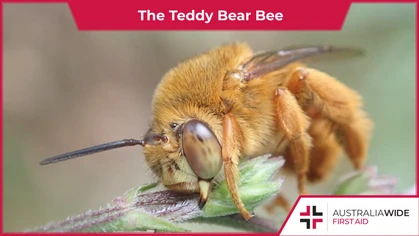6 Common Spiders in Melbourne

Bites and Stings
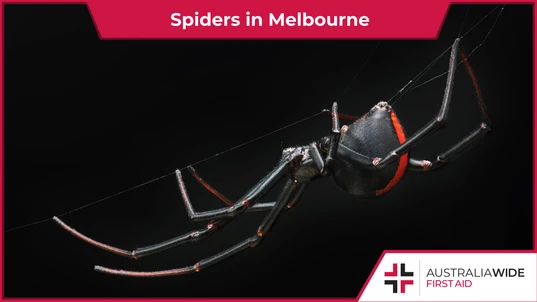
During the warmer months of spring and summer, Melbourne homes are often inundated with several spider species on the hunt for food and mates. These spiders can cause bites ranging from the negligible to the extremely painful.
Melbourne homes are often inundated with several spider species during spring and summer. The hot and humid conditions can lead to a spike in the populations of the insects they eat. Likewise, many spiders come out of hiding in search of a mate. Most of the common spider species found in Melbourne are reluctant to bite and rarely cause significant injuries. However, becoming familiar with their key characteristics can reduce your risk of envenomation and a potentially adverse reaction. In this article, we cover the appearance, habitat, and danger level of six of the most common spider species found in and around Melbourne homes. We also cover spider bites in our Melbourne first aid courses: We have training locations in every state, capital city, and major town throughout Australia. Head to our website to find and enrol in a first aid course near you today.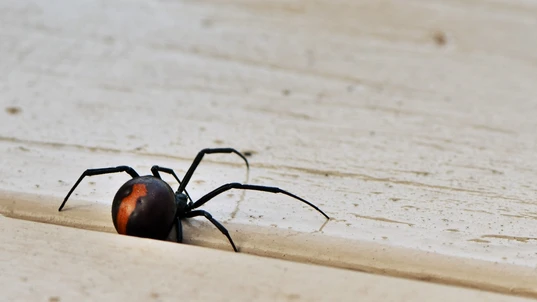
The Redback spider
Red back spider
Appearance
- Female Redbacks are generally black in colour, though some may be brown - males, meanwhile, are usually light brown
- Female Redbacks have an orange or red stripe on the top of their abdomen, while males have white or yellow markings on their abdomen
- While male Redbacks only grow to a modest 5 mm, females can grow up to 1 cm
- Both male and female Redbacks have an hourglass shaped marking on their underside - the males' is pale, while the females' is orange or red
Habitat
Redback spiders like to build their webs in sites where there is sufficient food supply and shelter, including:- Sheds
- Toilets
- Junk piles
Danger
Only female Redbacks have large enough fangs to penetrate human skin. And though they are more aggressive than their male counterparts, they generally only bite in defence. Common early symptoms of a Redback spider bite include:- Pain
- Sweating
- Muscular weakness
- Nausea and vomiting
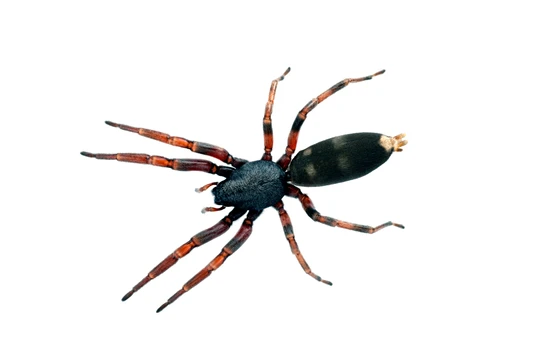
The White tail spider
White tailed spiders
Appearance
- Cylindrical, cigar shaped body that can range from grey to dark reddish in colour
- A white spot at the tip of their abdomen
- Dark, orange brown bands on their legs, which can reach 5 cm in length
Habitat
In the outdoors, White tail spiders like to shelter beneath bark, rocks, and leaf litter. Indoors, they are known to inhabit:- Sheltered nooks and crannies
- Between pieces of fabric, including clothes, towels, and bedding
Danger
White tails are not aggressive and typically only bite when they are startled. And though their bites have long been associated with necrotic ulcers, they generally only result in mild symptoms similar to those of a bee sting, including:- Initial burning pain
- Swelling
- Itchiness
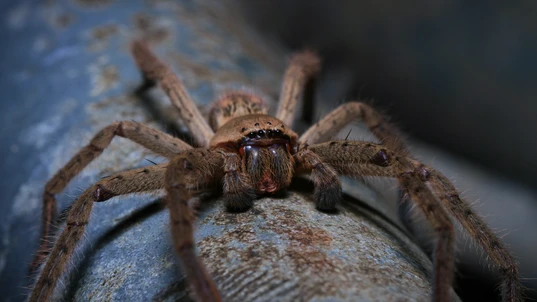
The Huntsman spider
Huntsman spiders
Appearance
- Flat, dark coloured body
- Long, hairy legs that bend forward like those of a crab and can reach up to 15 cm
Habitat
- Under loose tree bark
- In crevices on rock walls
- Beneath rocks, logs, and other litter
Danger
Huntsman spiders are largely harmless to humans, as they only bite when provoked. Likewise, their bite typically only causes negligible symptoms like mild pain and swelling.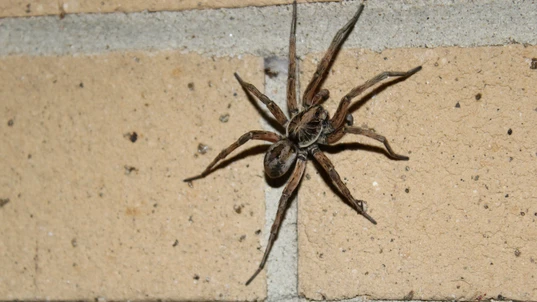
The Wolf spider
Wolf spiders
Appearance
- Hairy, drab coloured body with grey, brown, or black markings
- Light grey, cream, or black underside superimposed with black or white markings
- Long legs that can range in size from 1.2 to 5 cm
Habitat
Wolf spiders are commonly found in suburban backyards, where they shelter in leaf litter or burrows made from:- Pebbles
- Twigs
- Other material
Danger
Wolf spiders are not considered dangerous to humans, as they prefer to run away from trouble and only bite when threatened. Likewise, their bites generally only cause mild symptoms like localised pain or itching.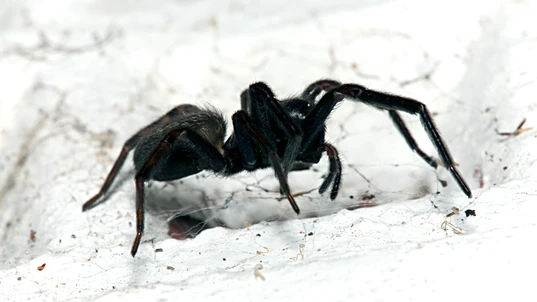
The Black house spider
Black house spiders
Appearance
- Dark, robust body - their abdomen tends to be charcoal grey, while their carapace and legs can range from dark brown to black
- Their carapace is typically covered in grey hairs
- Females can range in size from 12 mm to 18 mm - males, meanwhile, are slightly smaller and tend to range from 9 mm to 15 mm
Habitat
Black house spiders have been known to build their webs in:- Rough barked tree trunks
- Logs
- Rock walls
- Window frames and wall crevices
Danger
A shy species, Black house spiders rarely leave their webs and bite infrequently. In saying that, their bite can be painful and cause local swelling. Other, less common symptoms include:- Nausea and vomiting
- Sweating
- Giddiness
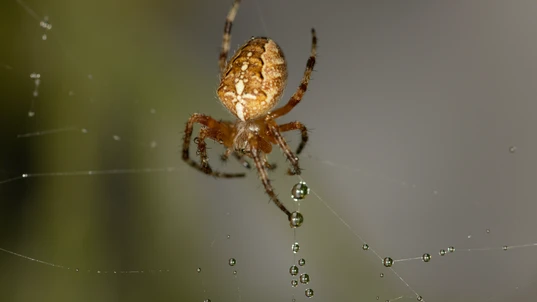
The Garden orb weaving spider
Garden orb weaving spiders
Appearance
- Females can range in size from 2 cm to 3 cm - males, meanwhile, are slightly smaller at 1.5 cm to 2 cm
- A stout, reddish brown or grey body with a leaf shaped pattern on the abdomen
- Their bulbous, triangular shaped abdomen also has two noticeable humps towards the front
Habitat
Garden orb weavers generally suspend their large, wheel shaped webs between trees and shrubs.Danger
Garden orb weavers are typically non aggressive and reluctant to bite. Likewise, their venom has little impact on people and generally only causes mild local pain, swelling, and numbness.Looking to get you First Aid knowledge up to date?
We run certified First Aid courses throughout all major Acustralian citys. Find a location near you.
First aid
Bites from big black spiders like the Black house spider should be treated as a possible Funnel web spider bite. Apply the Pressure Immobilisation Technique and Call Triple Zero (000) for an ambulance. Bites from other spiders, including the Redback spider, can be treated with a cold compress. More information can be found in our spider identification and treatment article and chart. It is important to remember, the best way to avoid spider bites is to avoid spiders. Practise spider control around your home by:- Dusting and cleaning your home regularly, and ridding it of excess, seldom used clutter
- Sealing up your home by replacing torn window screens and installing felt rolls at the bottom of your doors
- Apply a natural insecticide like peppermint oil to spider affected areas
Originally published at
https://www.australiawidefirstaid.com.au/resources/spiders-in-melbourne
as part of the Australia Wide First Aid Articles Library






